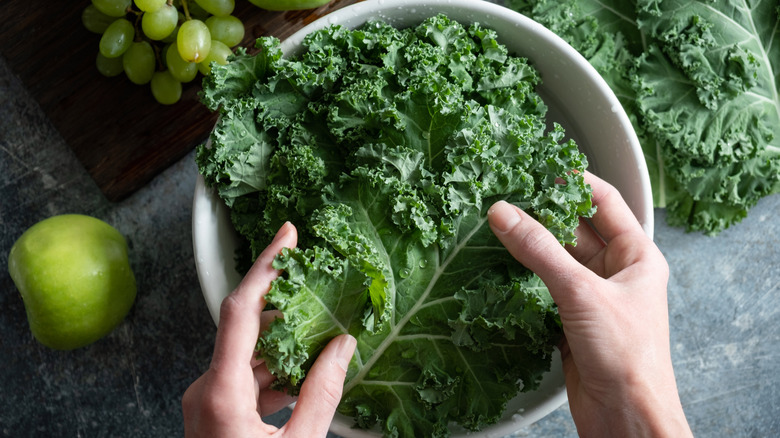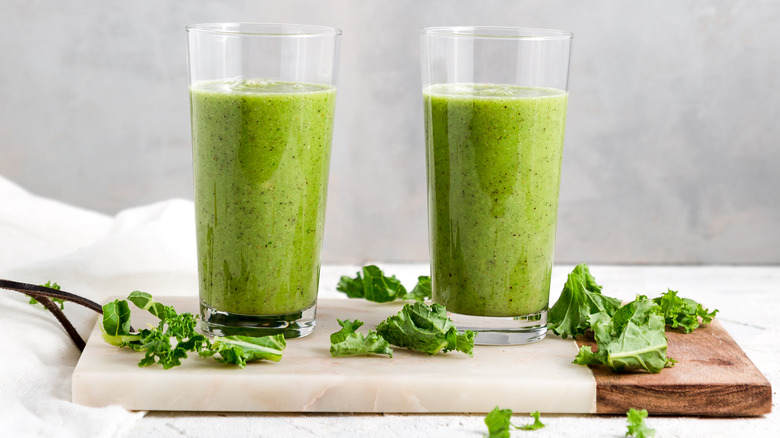The Absolute Best Ways To Keep Kale Fresh
Another week, another bunch of uneaten kale down the garbage shoot. We all know the feeling of setting out for the grocery store, fulling intending to consume bowls of kale salads and smoothies all week, only to find that once beautiful and crisp bunch of kale wilted and smelly in our refrigerator days later. Then, after discovering our loss, bidding it farewell, and tossing it in the trash, we shrug it off and reach for the trusty bag of chips in the cupboard.
In our minds, the only thing standing between us and our healthiest selves are those soggy kale leaves. However, with these hacks to keep them crisp, we can all live out our morning green juice fantasies. That's right — now that our kale will stay fresh, we can fully embrace our healthy intentions and reap the rewards of a diet that includes fresh greens actually making it on our plates, rather than in our trash bins.
Dry and refrigerate
Before putting away your kale, it's best to hold off on washing until it's time to eat it. As with most vegetables, moisture tends to accelerate wilting and spoilage, and if wet kale goes into the fridge it will turn to mush in no time. Instead, as Epicurious suggests, use a paper towel to wipe away any leftover moisture, wrap the bunches in another paper towel, and then place them in a storage bag. Once the kale is wrapped and zipped, place it in the back of the fridge or the crisper where it will last up to five days.
If waiting to wash the kale seems inconvenient, strip the leaves from the stems, chop them up, and give them a nice rinse. To avoid moisture, run the leaves through a salad spinner and pat them dry with a paper towel. After that, follow the steps above to store in the fridge. According to MasterClass, because kale leaves are hardy, they won't wilt as quickly once removed from the stem, and if properly dried they should keep fresh for three to five days.
Blanch and freeze
If three to five days sounds like a stretch, freezing your kale is another option. However, it's not as simple as just throwing the kale in the freezer. According to EatingWell, blanching prevents kale leaves from going bitter, maintains their deep green color, and extends their storage life for up to six months. To blanch your kale, first chop and separate the leaves from the stem. Then, bring a big pot of water to a boil, cook the leaves for about 2 minutes, and then put them into a bowl of ice water to stop the cooking process. After that, dry the leaves with a paper towel and place them on a baking sheet in the freezer. Once they're frozen, put them in an air-tight freezer bag (via HGTV).
When the time comes to use your kale, simply thaw the bag of greens in a bowl of water. Since the leaves were separated in the freezing process, you can grab any amount you need. This method is not ideal for recipes like salads, which depend on the leaf's texture, but works sensationally in cooked dishes like kale lasagna, and kale soup. When in a hurry, the frozen kale leaves can easily be thrown into smoothies as a nutrition boost.


